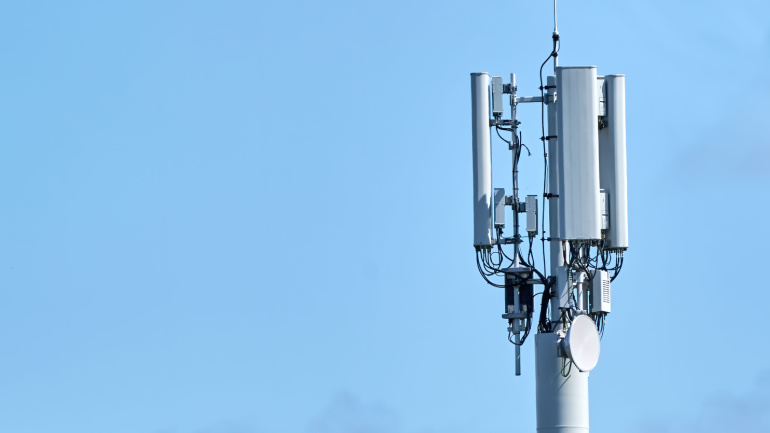Unveiling the hidden importance of fibre optic cables in delivering quality and reliable internet services, we spotlight Prysmian, European industry front-runner. Delving into the connection between prudent cable choice and tangible savings in network installation, while highlighting the formidable costs of cable failures. Prysmian’s commitment to innovation shines in miniaturising cables without compromise, resulting in practical and ecological benefits. Prysmian’s Telecom Business Director is set to reveal more insights at the Connected Britain Conference.
Deutsche Telekom has made a significant stride in mobile telecommunications, achieving 12 gigabits per second in field tests using 6GHz frequencies – quite a leap from the current 5G network speeds. The German telecom giant credits this achievement to merging two data streams from different frequency antennas, a method they suggest may become standard for these bands. However, before this breakthrough can materialize, it’ll go under scrutiny during the upcoming ITU World Radiocommunications Conference.
Qualcomm and Samsung recently announced a pioneering success in telecommunications; achieving dual uplink and quadruple downlink carrier aggregation for 5G FDD spectrum. This innovation, tested using Qualcomm’s Snapdragon X75 5G Modem-RF System with Samsung’s 5G radios, could provide operators increased flexibility. This trial demonstrates the potency of Advanced 5G modems in enhancing 5G connections, hinting exciting future developments in 5G. Commercial implementations of these findings are expected by late 2023.
In a promising move towards transparency, UK’s BT and software giant SAP have joined forces to test SAP’s Sustainability Data Exchange (SDX) – a novel system that captures, tracks and shares data on obscure, indirect emissions, known as Scope 3. Given the numerous entities and different methodologies involved in disclosure, SDX utilizes carbon data interoperability standards to provide a unified portal for monitoring supply chain emissions data, thus streamlining the gathering and dissemination of precise Scope 3 information.
The Online Safety Bill emerges as a tool for platform owners to tackle illicit content. Yet, penalties attached to non-compliance may be a hefty burden. The proposed “spy clause” infamously mandates the scanning of private user content, leading to vocal debates around privacy and the technology needed to enforce this clause. Amidst strong sentiments about potential surveillance, the UK government remains unwavering, resulting in possible market exits by platforms such as WhatsApp. With the telecom industry on the brink of substantial readjustments, the importance of staying informed is evident.
VMO2, a leading UK telecom company, is saying goodbye to 3G services by 2025, focusing on the advancement of 4G and 5G capacities. Though this marks the end of an era, it opens doors for superior technology and remarkable energy efficiencies. What does this imply for consumers and the future of mobile connectivity? Let’s explore.
As the world navigates towards an AI-integrated future, the call for reliable connectivity has amplified. The UK’s telecom market, a beacon of global standing, is pivoting towards this demand. Its thrust for seamless connectivity is stimulated by the push for efficient network management and shared infrastructure. Spearheading this transformation is the UK’s transition to fibre optics, aided by the strategic decision to sunset the Public Switched Telephone Network by 2025.
Ekinops, a telecom solutions leader, has unveiled its OneOS6-LIM, a game-changing virtualization solution. This innovation optimizes hardware, integrating an efficient ONEe600 router to provide top-notch services, debunking doubts about uCPE economics. Ekinops’ partnership with EANTC AG solidified its position as a potent player in NFV, offering quick ROI for service providers.
Kcell, Kazakhstan’s leading operator, is set to revolutionize the nation’s telecommunications landscape by launching a colossal seven-year 5G rollout plan with Ericsson at the helm. The mission includes a considerable shift towards a united Radio Access Network strategy merging 5G with existing networks, which proves to offer optimize utilization and smoother transition to advanced technology. Furthermore, this project incorporates Fixed Wireless Access, providing internet solutions in challenging terrains.
Amazon’s Project Kuiper and Vodafone join forces to bolster 4G and 5G availability in Europe and Africa using cost-effective low Earth orbit (LEO) satellites. This partnership aims to connect distant cellular antennas to core networks, enabling telecom services without relying on intricate fibre-based systems. With a larger goal of bridging the digital divide, the collaboration also plans to offer backup services for disruptions and connect distant infrastructure.













